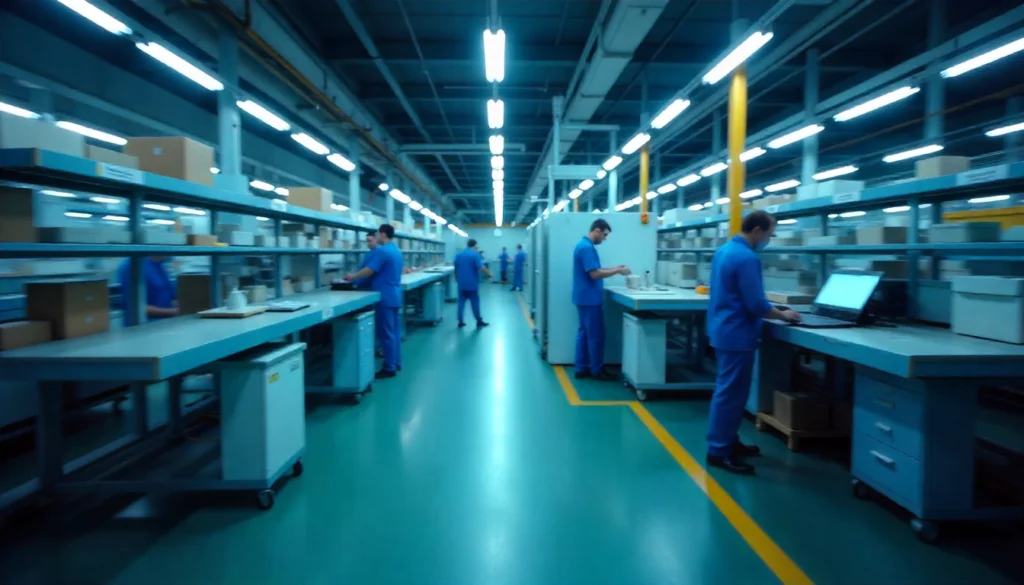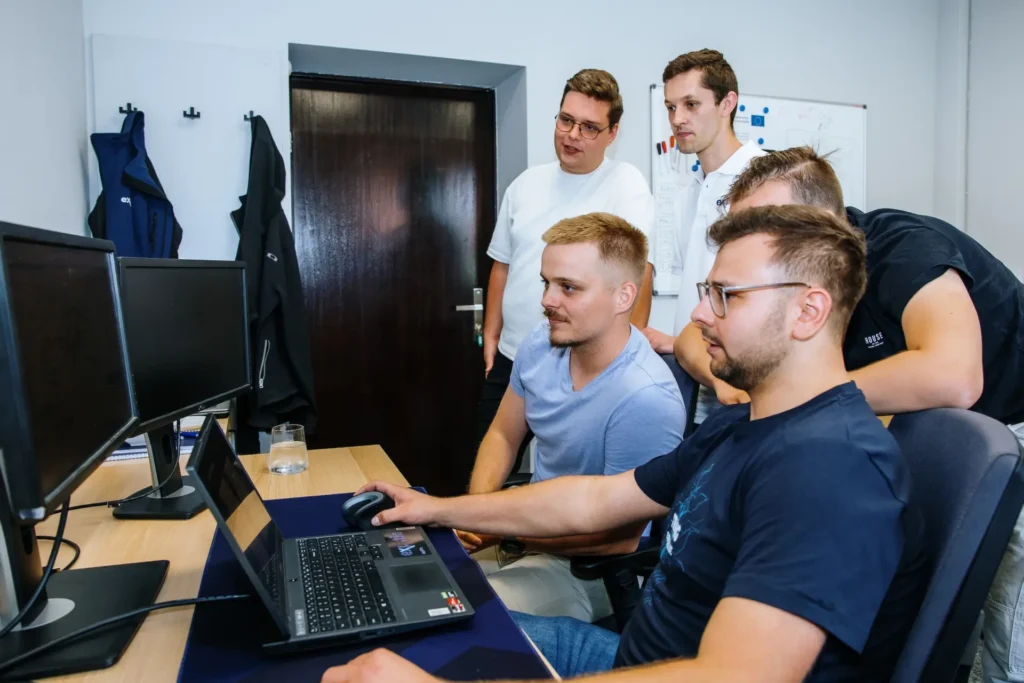What is Lean Manufacturing? It is the answer to the question of how to operate more efficiently. It sounds simple, but what exactly lies behind the term lean manufacturing? What real benefits can this concept bring to medium and large companies? You will learn all about this in this article.
5 Principles of Lean Manufacturing
Lean Manufacturing (Polish: szczupła produkcja) is a philosophy of managing production processes focused on eliminating waste (Eng. waste; Jap. muda), delivering value to the customer, minimizing inventories, and continuous improvement.
Sounds like every entrepreneur’s dream come true? Get to know the fundamental principles of Lean Manufacturing:
- We produce something that is valuable from the customer’s point of view – identifying what the customer truly values and is willing to pay for.
- Defining the value stream (Value Stream) – analyzing the entire production process to recognize what adds value and what is a source of waste.
- Smooth and continuous flow (Flow) – eliminating downtimes, idling, etc.
- Pull production (on demand) – producing in line with actual demand, not for stock.
- Continuous pursuit of perfection (Kaizen) – Lean is not a one-off project but a continuous process. Every company must constantly identify areas for improvement and enhance them systematically.
In addition, principles related to respect for employees, built-in quality in the process (e.g., stopping the line when a defect appears), and standardization of work are important.

History and development of the Lean Manufacturing concept
To better understand the idea of lean production, let’s take a brief history lesson. The concept of Lean Manufacturing was born in Japan after World War II. Its foundations were built on Toyota’s production practices (Toyota Production System, TPS), developed by, among others, Taiichi Ohno and Eiji Toyoda.
Toyota was inspired by the pre-war theories of scientific management by Frederick Taylor and the mass production of Henry Ford.
Popularization of the term “lean”
The terms “lean production” and “lean manufacturing” were popularized by the book The Machine That Changed the World (1990) by James P. Womack, Daniel T. Jones, and others, which showed Toyota’s advantage over traditional mass production.
Over time, the Lean concept expanded beyond pure industrial production – into services, healthcare, product development, and the IT sector. In recent decades, Lean has also begun to merge with new technologies – digitalization, IoT, and MES/ERP/BI systems.

Lean Manufacturing is a state of mind!
How to implement this philosophy in your company? We’ll help you build your growth strategy!
Benefits of implementing Lean
We are often asked why we implemented Lean Manufacturing in our company. The reason is that we are aware of the benefits this strategy can bring to companies, especially medium and large enterprises:
- Reduction of production costs – less scrap, less waste, shorter waiting times, better use of resources.
- Improved quality – when problems are detected quickly (e.g., thanks to the principle of Jidoka or quality control tools), we eliminate defective products faster.
- Faster order fulfillment / shorter lead time – thanks to flow smoothness, pull production, and eliminating bottlenecks, we operate more efficiently.
- Reduced inventories and funds tied up in storage – a budget frozen in warehouse resources works against us, and Lean helps manage buffer stocks better.
- Greater flexibility – the company can react more quickly to changes in demand or changing market conditions.
- Employee engagement and a better work culture – Kaizen, teamwork, transparency, and work standardization foster higher motivation and accountability.
- Better use of technology and data – as the aforementioned article on combining Lean with technology shows: automating data collection and integrating MES, ERP, BI, and IoT systems help detect bottlenecks and respond quickly.
Empirical studies in Poland confirm that the use of Lean tools (e.g., standardization, visual management, 5S) affects the improvement of production parameters — efficiency, quality, and reduction of defects.

Examples of Lean Manufacturing in practice
Are you wondering what Lean Manufacturing looks like in practice? Here are a few examples of how Lean works:
In a study covering Polish manufacturing companies, the level of implementation of the Lean Manufacturing system was examined – tools such as 5S, standardization, and Visual Management turned out to be the most commonly used; likewise the pillars of Just-in-Time and Jidoka[i].
Case study: a company manufacturing mechanical seals – applying selected elements of Lean (identifying and eliminating waste, standardizing workstations and work instructions) made it possible to improve production process parameters (e.g., reduce cycle time, reduce defects)[ii].
In the automotive industry in Poland – studies show that companies using Lean tools achieve significant benefits, but the condition is a well-thought-out sequence of implementations, adaptation to the specifics of the plant, and appropriate employee engagement[iii].
Technological example: combining Lean with digital technology – automating data collection and integrating MES/ERP/BI and IoT – these solutions support the philosophy of lean manufacturing, enabling better identification of waste and faster response.
Lean Manufacturing is a philosophy that works in every industry – from production to services and IT. If you are looking for a way to reduce costs and improve quality, lean production provides concrete tools and proven results.
[i] M. Al-Nusyrat, The Implementation of Lean Manufacturing System in Production Process Theoretical Analysis and Empirical Investigations. An Empirical Study on the Manufacturing Companies in Poland, „Archives of Business Research” 2023, t. 11, nr 3, s. 14–37, https://doi.org/10.14738/abr.113.14146.
[ii] M. Jakubiec, Improvement of the Production Process Using Lean Management – Case Study, Politechnika Śląska, „Zeszyty Naukowe. Organizacja i Zarządzanie” 2022, z. 158, s. 229–242, http://dx.doi.org/10.29119/1641-3466.2022.158.15.
[iii] W. Urban, D. Tochwin, Application of Lean Manufacturing Tools in the Automotive Industry, a Multiple Case Study, Politechnika Śląska, „Zeszyty Naukowe. Organizacja i Zarządzanie” 2023, z. 181, s. 603–618, http://dx.doi.org/10.29119/1641-3466.2023.181.38.









